Amelia Boone Q&A: For this Tough Mudder, the pain's just part of the fun

If obstacle racing can be said to have a “face,” it would be the smiling, wind-burned, mud-spattered mug of Amelia Boone, a 32-year-old attorney who recently left the giant Chicago law firm of Skadden, Arps, Slate, Meagher & Flom, to relocate in San Jose, California, where she now works as in-house counsel at one of the best-known companies in Silicon Valley. An above-average athlete growing up in rural Oregon, Boone drifted from competitive sports after high school, only to discover obstacle racing after being talked into trying a Tough Mudder in 2011.
Four years later, she has won the Spartan Race national title (2013), and is the three-time winner of the World’s Toughest Mudder, her most recent WTM victory coming last November in Las Vegas. Sponsored by Reebok, Boone has never failed to podium in a race she has entered, although, as we shall see, not all the events she enters bother with places or podiums.
***
Austin Murphy:Congratulations on winning your third World’s Toughest Mudder. You mentioned on your blog that it became immediately clear, once you were on the course, that race organizers had “upped” their “game.” How?
Amelia Boone: It was evident in the first lap we did, there were obstacles much harder than any we’d had in the past. As soon as I did the first lap I was like, ‘Oh, this is gonna take much longer.’ They were more time-intensive, strength-intensive and just taxing. And you realized, Okay, this isn’t gonna be a nice, like, 24-hour run with a few walls thrown in.
AM:They didn’t skimp on the water?
Mark McMorris Q&A: X Games Big Air and Slopestyle, In Motion tour, more
. But here there was no break from it. You were constantly wet. Which is hard, especially as it gets colder.
In the past they’ve had us crawl up those tubes, then drop into the water. This year they had it reversed: you had to climb up a rope into the tube, then crawl down. Or it was just longer iterations of familiar obstacles, with [she feigns cheer] substantial penalties if you fail! So if I fell off something, now I have to carry this concrete block, or carry this sand bag through a tube.
AM:You write, evocatively, of “not feeling like a sack of s---” after this WTM. One of the reasons you cited for that is having “raced your own race.” What’s an example of a time you didn’t race your own race?
AB: Based on how I’d done throughout the season, and the fact that I’d done well at longer races, I went into the Spartan world championships in Tahoe last October as a favorite. Everyone was like, ‘This is your course, you’re gonna crush it!’ Blah blah blah. It was a great mountain course, and I was really excited.
Generally, I kind of ease into races. I’m not the fastest out of the gate. Then I get into a groove, and then I start passing people. But at this race, there was this former Olympic Nordic skier from the Czech Republic [Zuzana Kocumova], who just took off. And I was like, ‘Wow, who is this woman? And I tried to chase her down.
I was running a race I just wasn’t comfortable with, and things kind of fell apart. In the course of running seven miles up a mountain, I ended up getting these awful calf cramps. I was rolling around on the ground. I was that person. That had never happened to me before. So I learned from that.
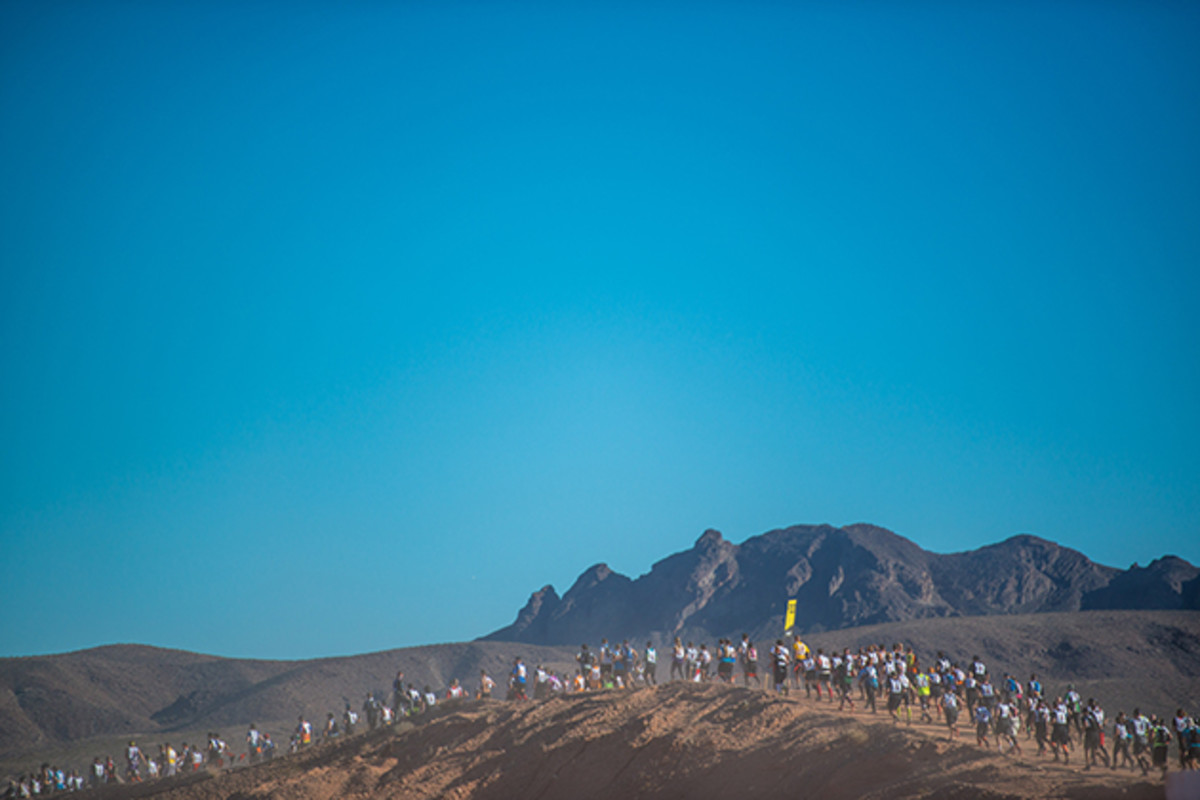
So, at this year’s WTM, you stayed within yourself. You’ve mentioned in several outlets how helpful it was not to break your tailbone this time around. Elaborate, please.
AB: Last year, when the cliff jump came around, I didn’t really know how to jump off a cliff. So on the second lap I was leaning to far forward and kind of got hit in the face, and it was really scary. So the next time around I overcompensated, and kind of sat back, in like a chair formation, and ended up breaking my tailbone. It was a hairline fracture; but I couldn’t really sit down for the next five weeks.
AM:And that was but one of your several injuries?
AB: Last year I had a torn meniscus, and had to go in for surgery eight weeks before World’s Toughest Mudder. I didn’t think I was going to make it back, but I decided to give it a go. I ended up winning, but I also ended up with a whole bunch of compensatory issues, ’cause I shouldn’t have been running for 24 hours, eight weeks after knee surgery.
Training Day: Supercross Rider Ken Roczen Gets Some Big Air
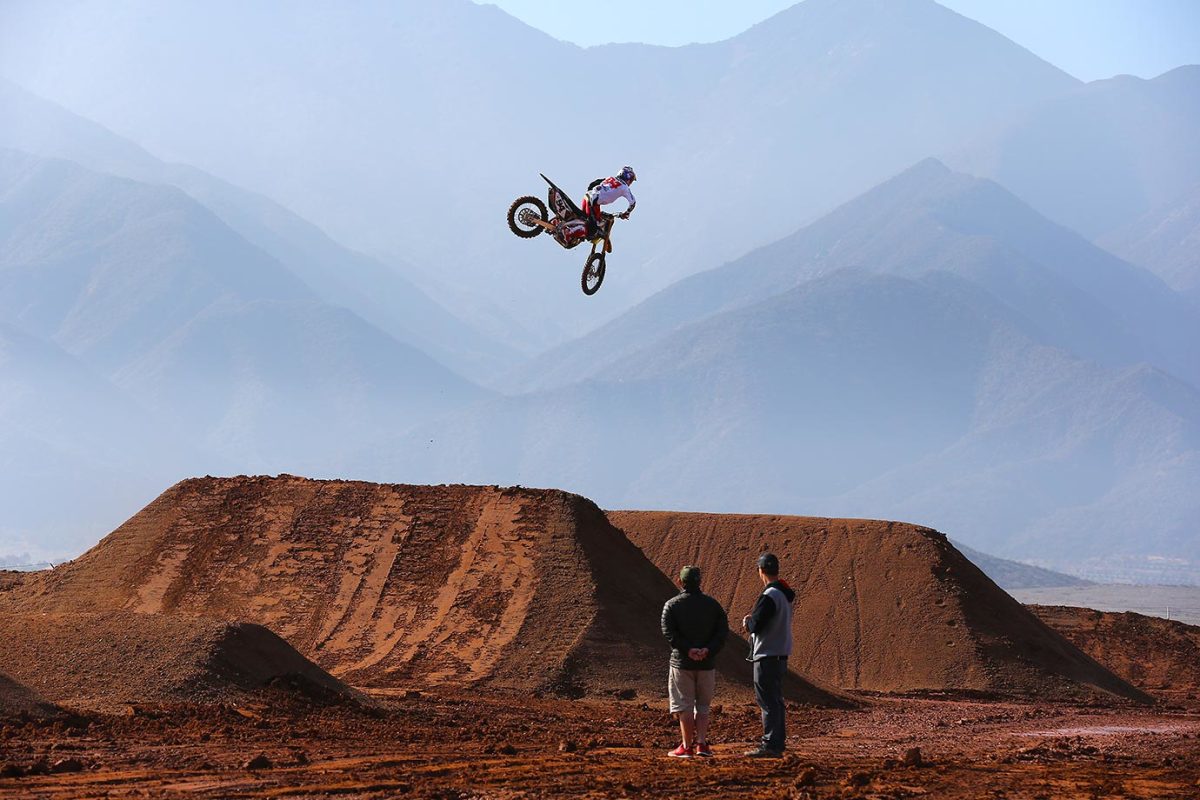
Roczen gets some big air on the team's practice track in Corona, Calif.
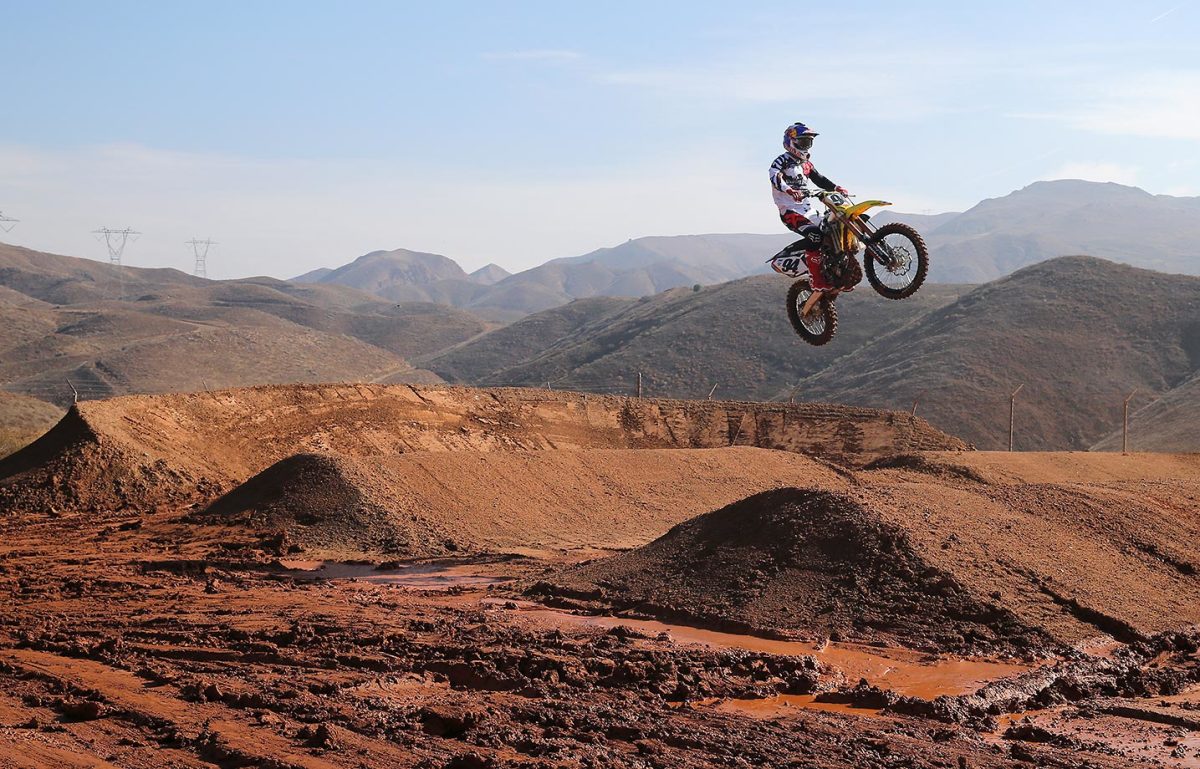
Ken Roczen gets some air on the 'whoops' section of the training facility.
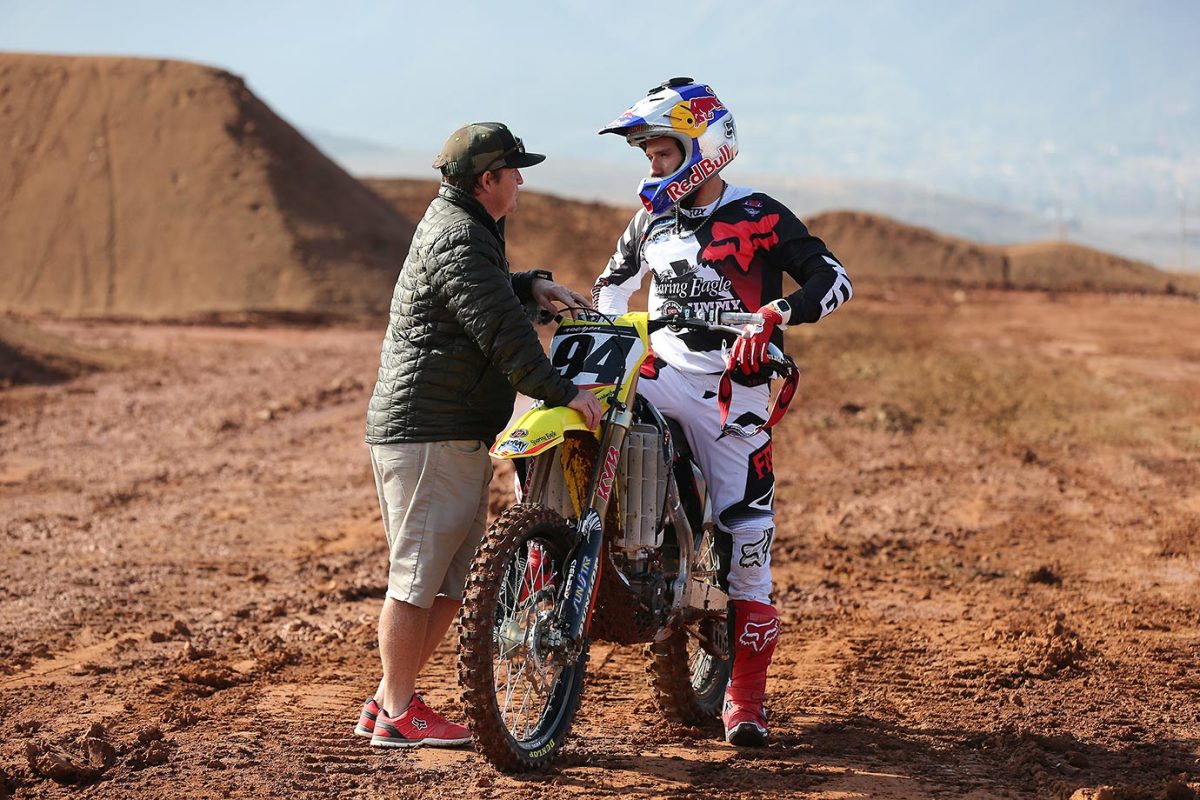
Ken Roczen, right, talks with Ricky Carmichael after a few practice runs on the track. Roczen rides the No. 94 Suzuki for RCH Racing, which is co-owned by Cary Hart and Ricky Carmichael.
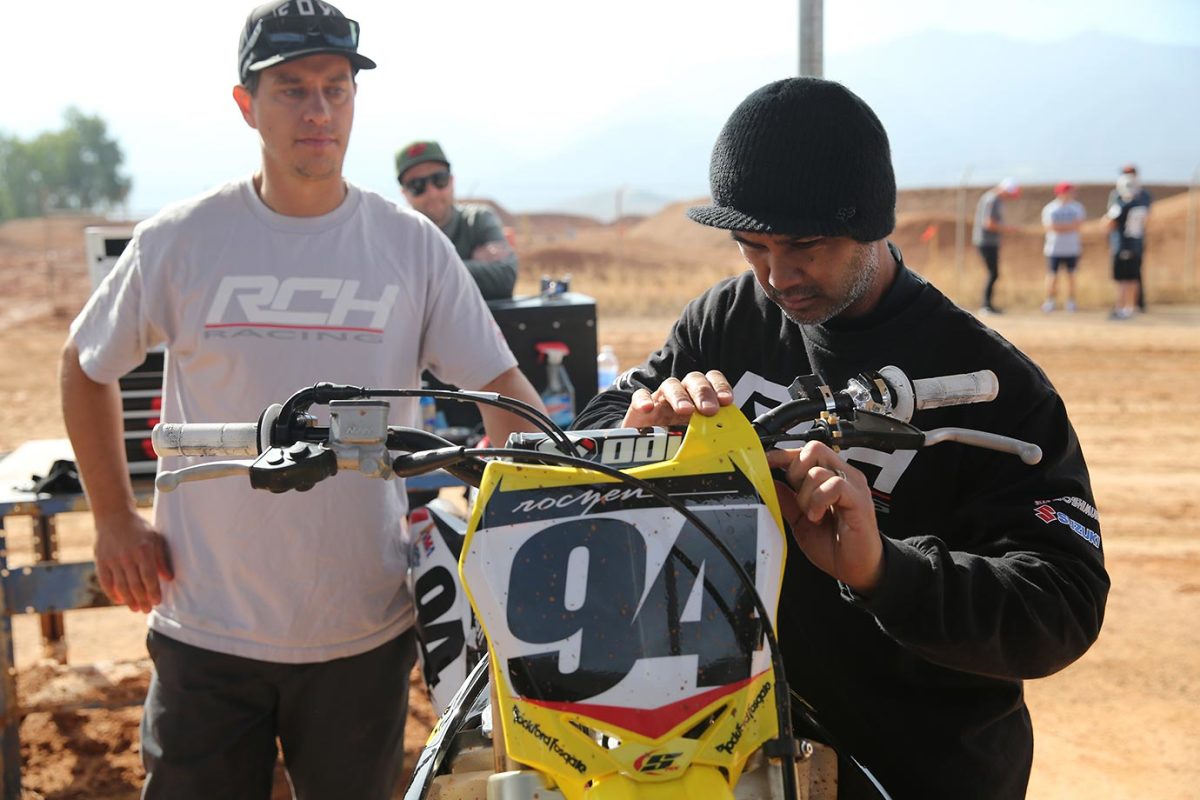
Ken Roczen's mechanics make some minor adjustments to his Suzuki bike during practice.
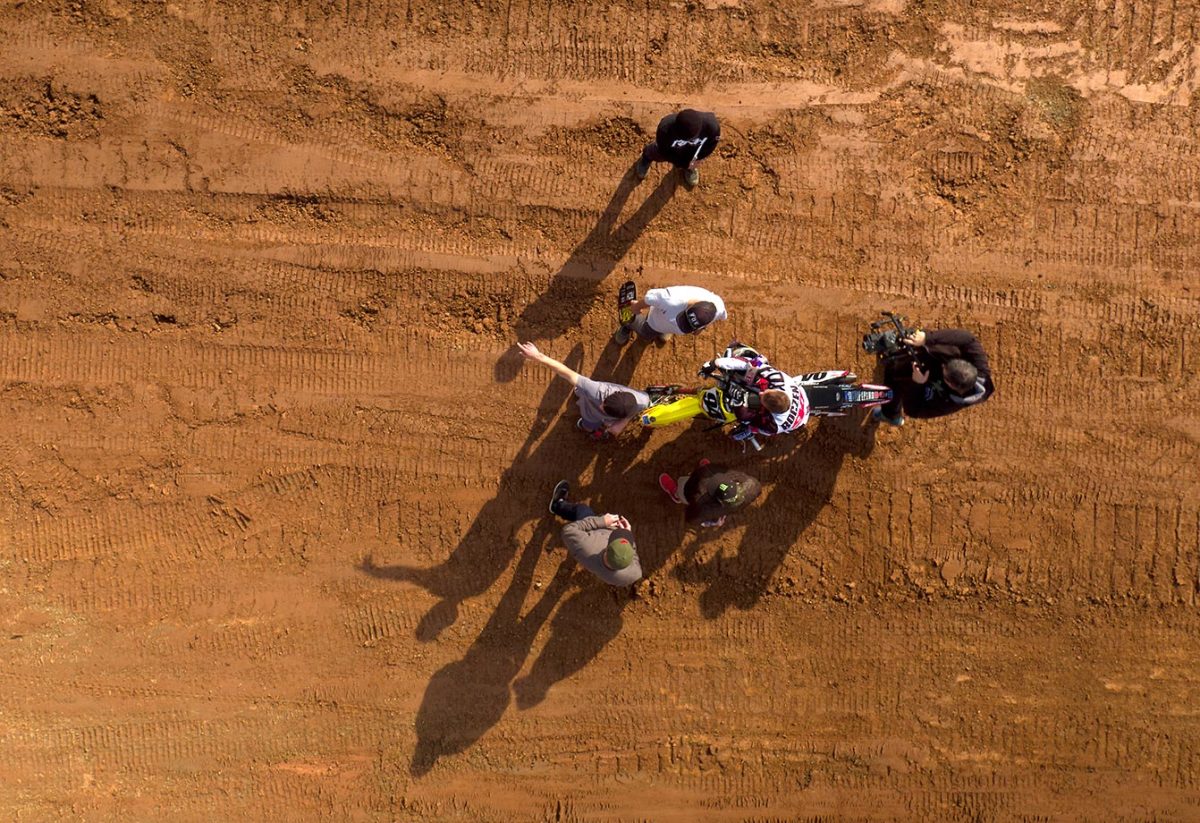
Ken Roczen talks with members of this team after a practice run at the team's training facility.
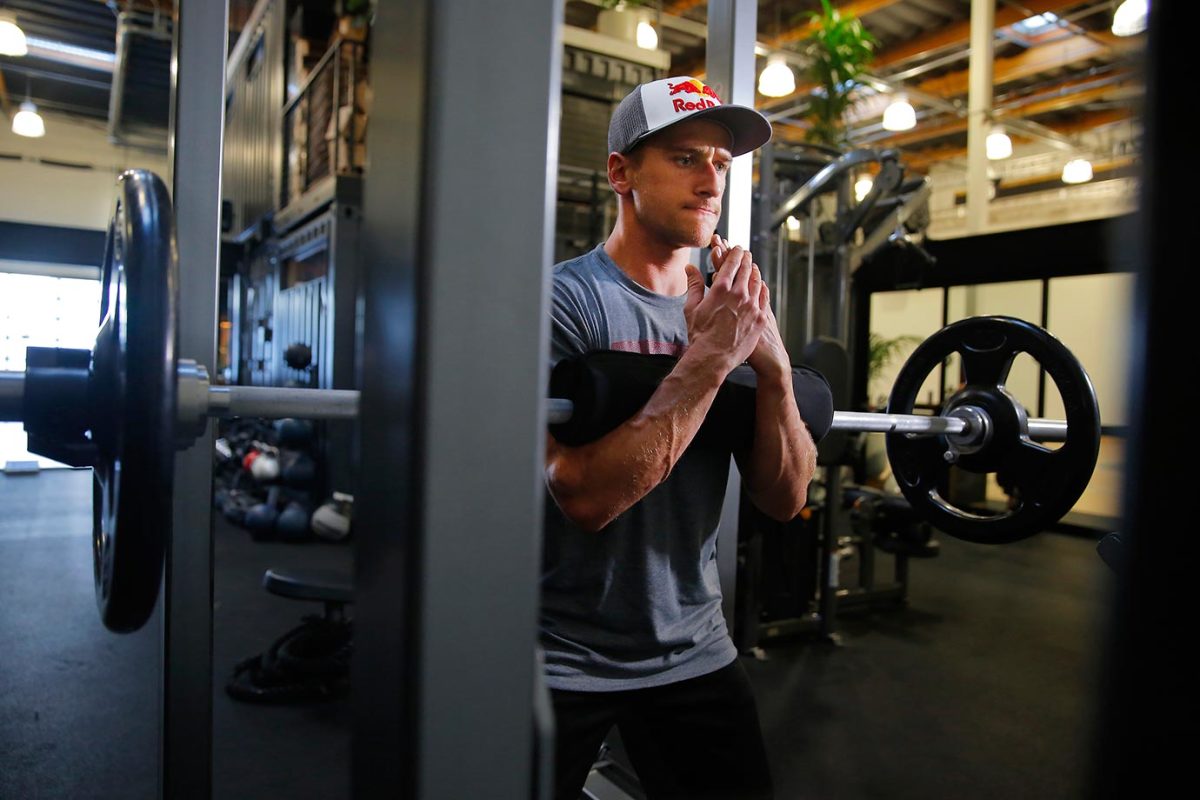
Weight training is a huge part of Ken Roczen's routine.
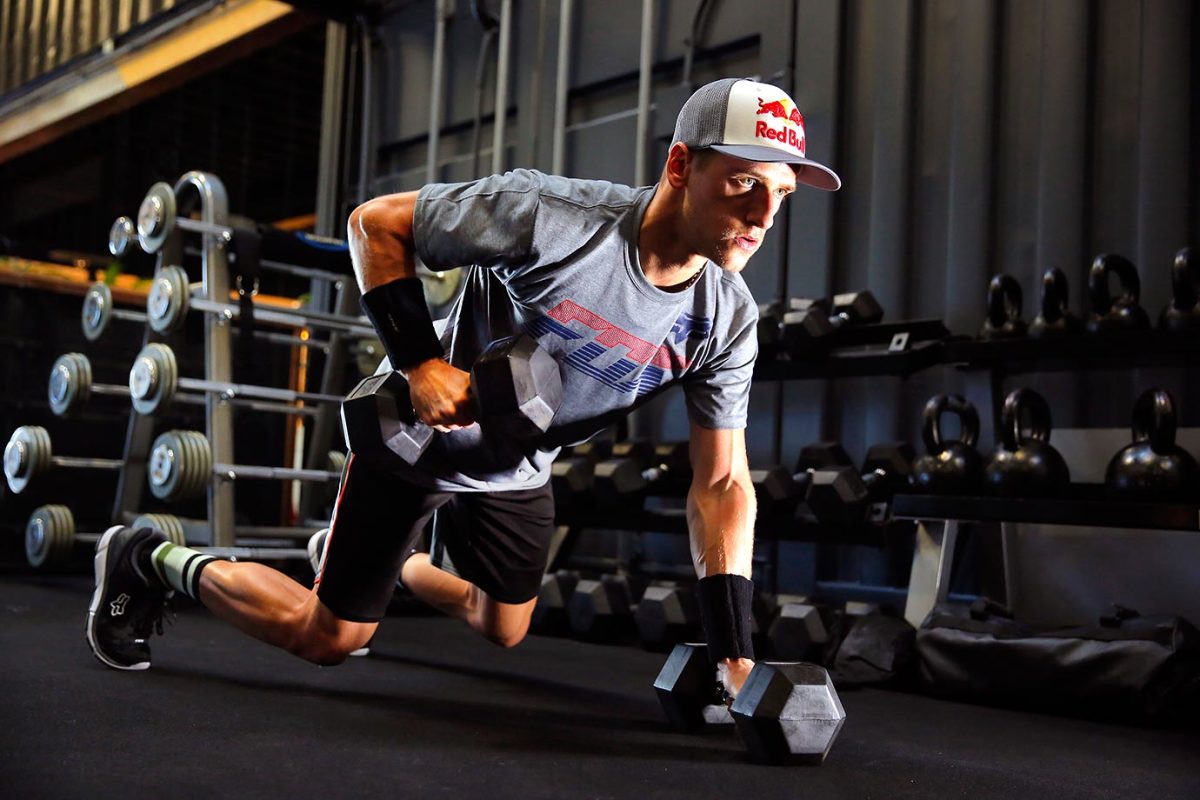
Ken Roczen utilizes a variety of exercises help keep his body in tune.
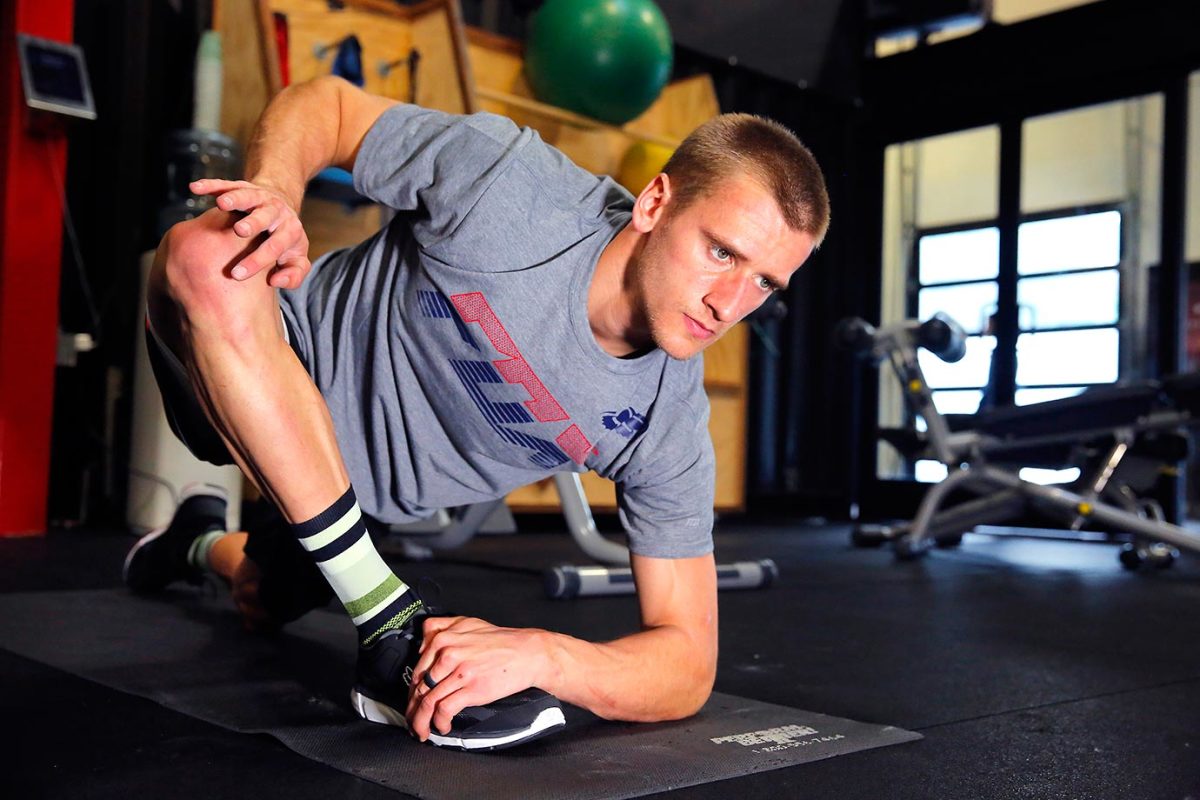
Stretching and flexibility help Ken Roczen perform at the highest level of his physically demanding sport.
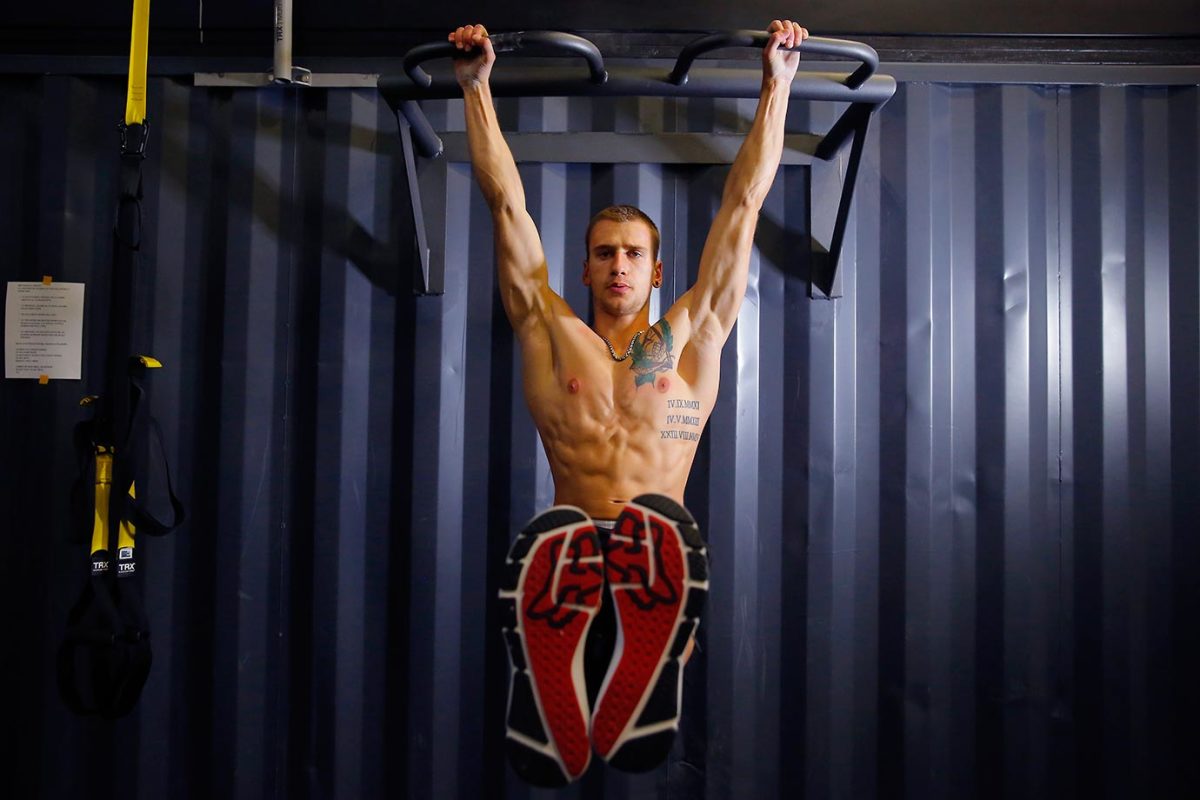
Keeping extremely physically fit helps prevent Ken Roczen from injury.

Ken Roczen grabs some weights for training in the gym.
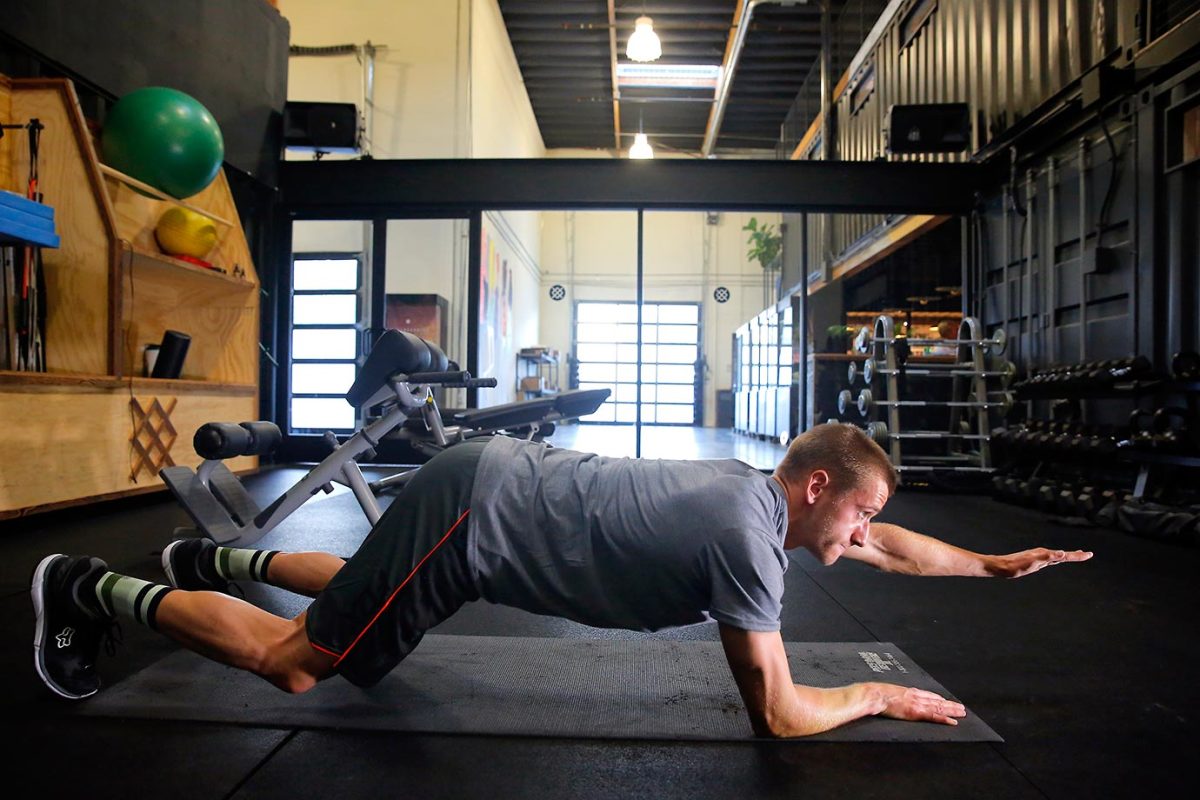
Ken Roczen works on strengthening his core and back muscles before races.
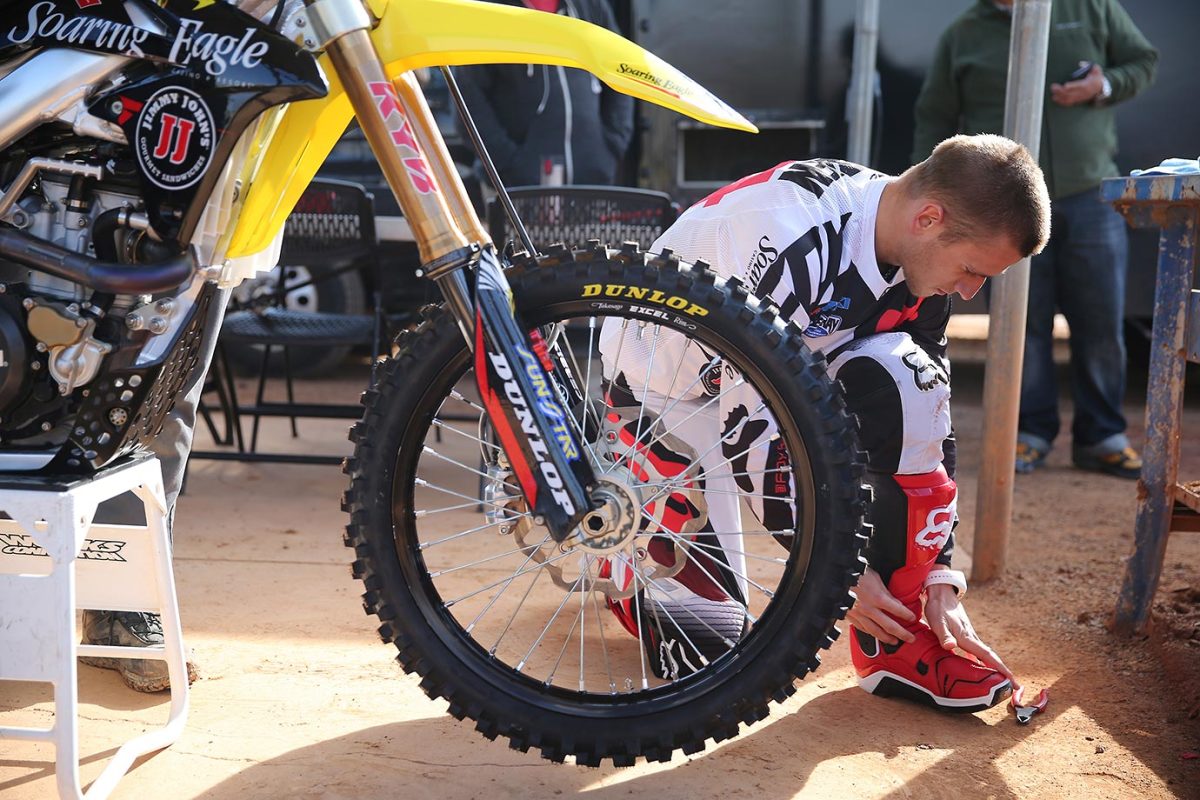
Ken Roczen buckles up his boots before practice.
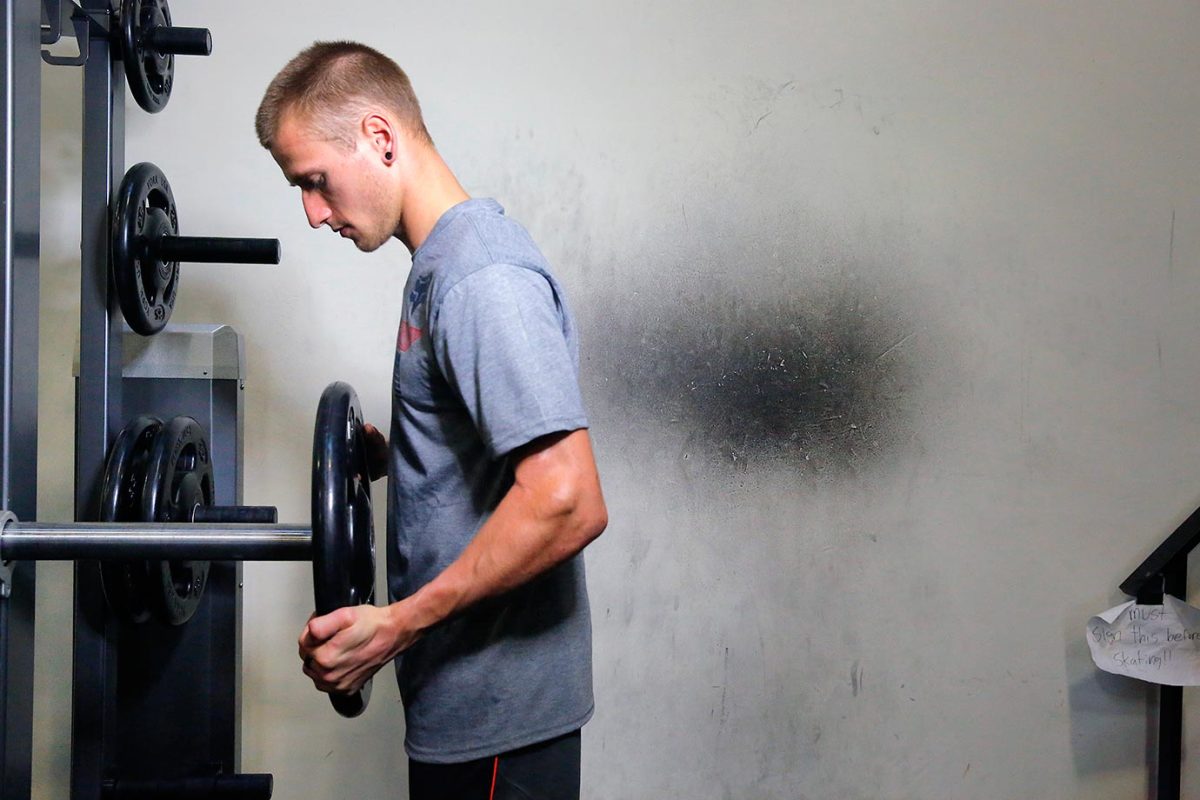
Ken Roczen puts some weights on the machine at the gym this week during training.
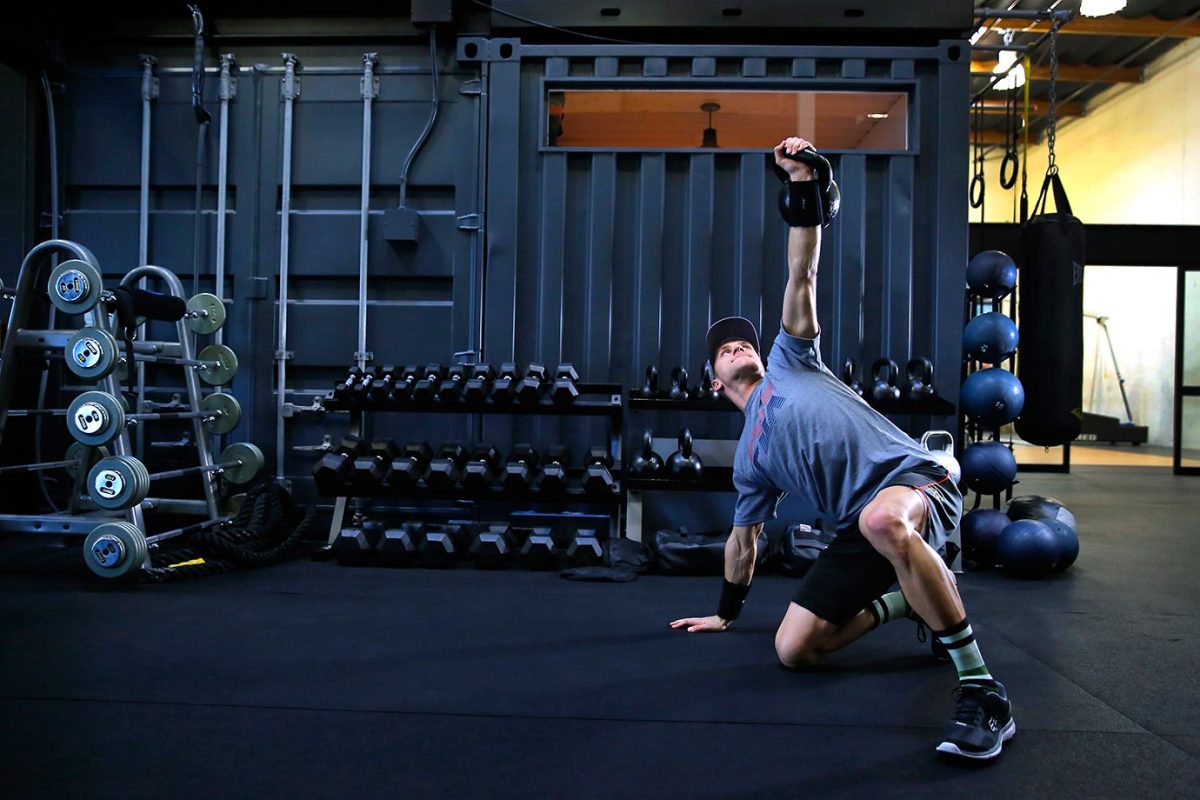
Ken Roczen is committed to being physically fit and works out in the gym to stay at the top of his sport.
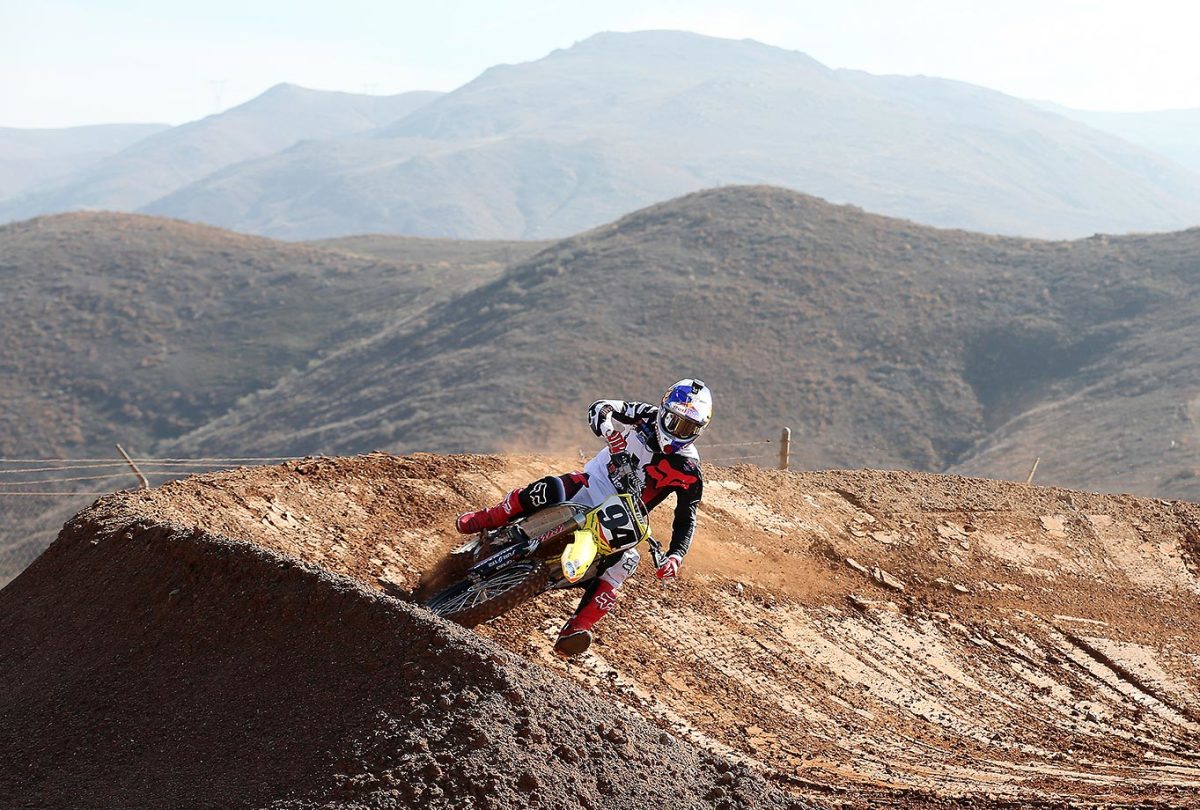
Ken Roczen hits the turn at the team practice facility in the hills of Corona, Calif.
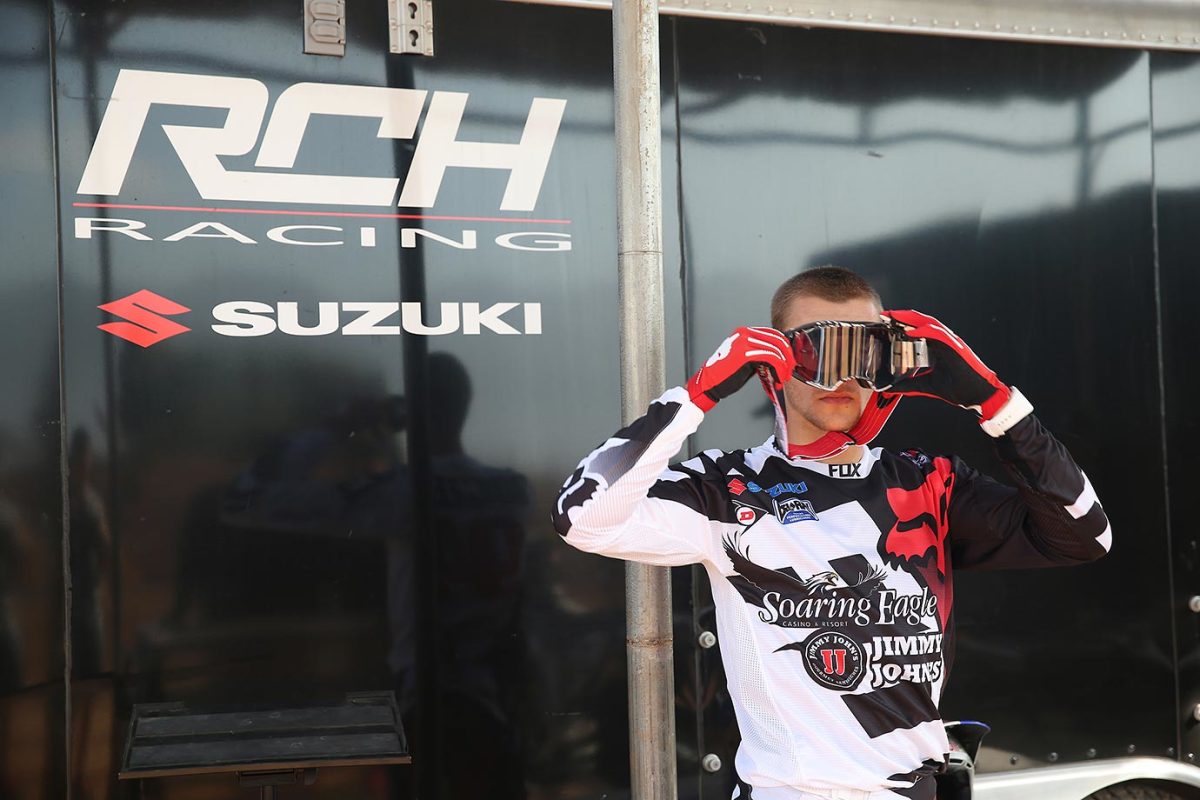
Ken Roczen, who races for the RCH Racing Suzuki team in Supercross, adjusts his goggles before taking to the dirt track for practice this week.
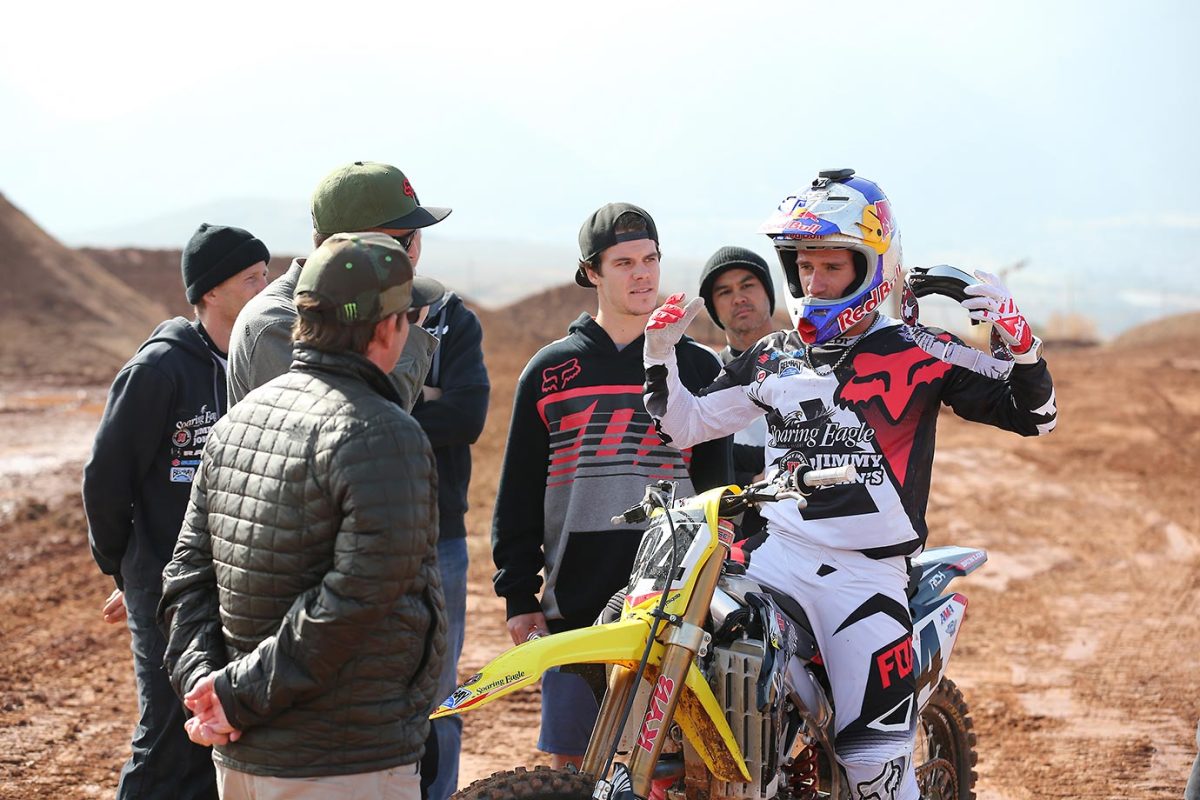
Ken Roczen talks strategy with his team.
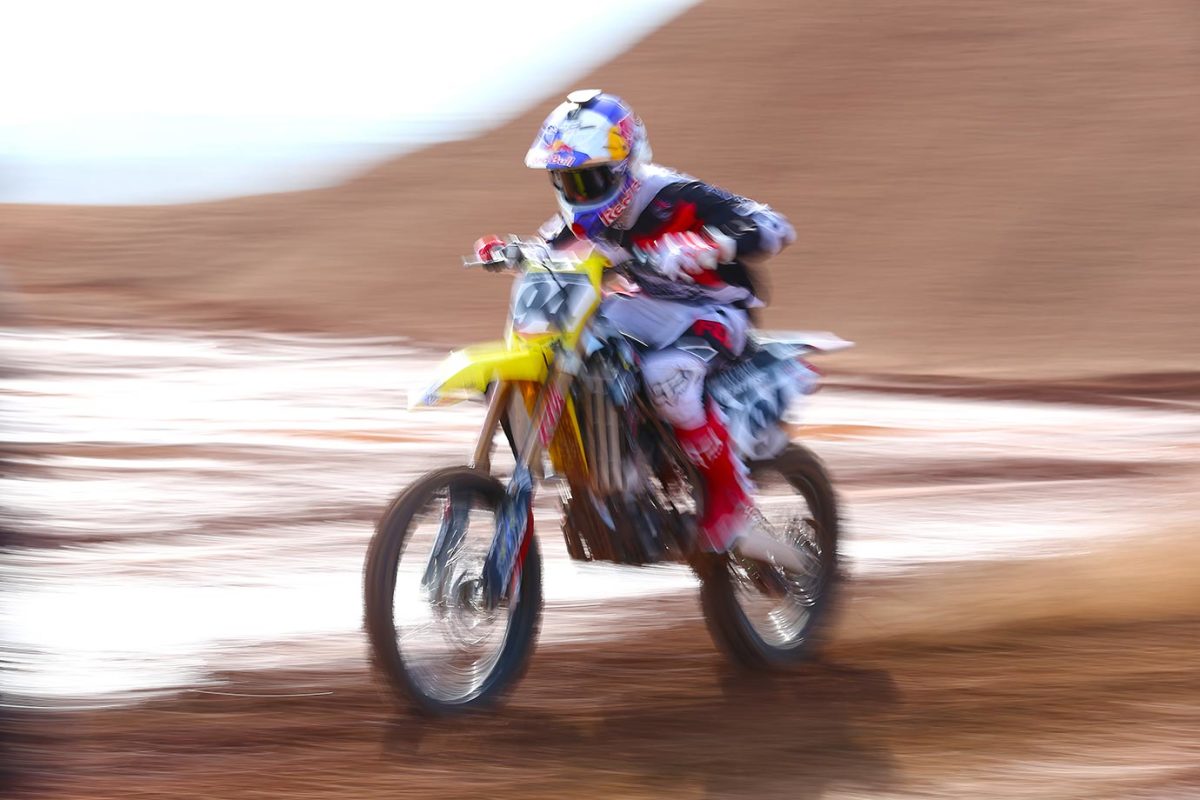
Ken Roczen gets some speed during practice.
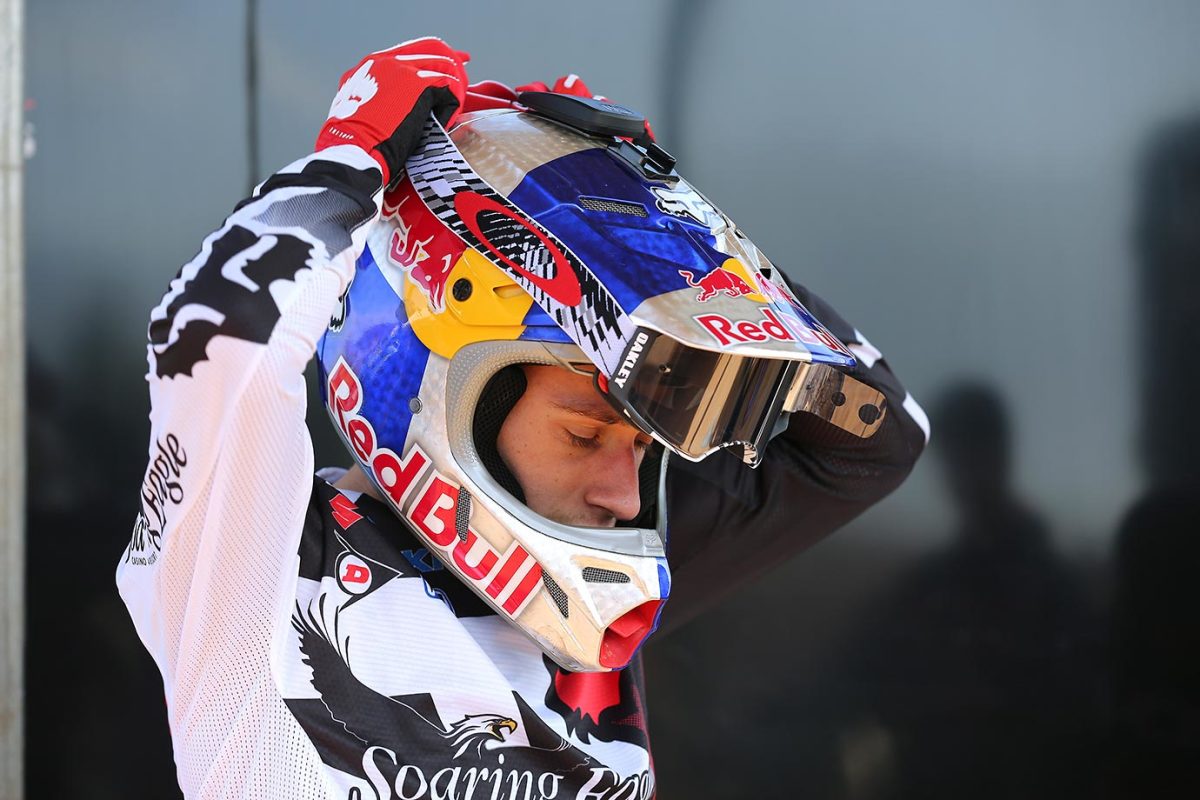
Ken Roczen straps his helmet on before heading out to the track for practice.
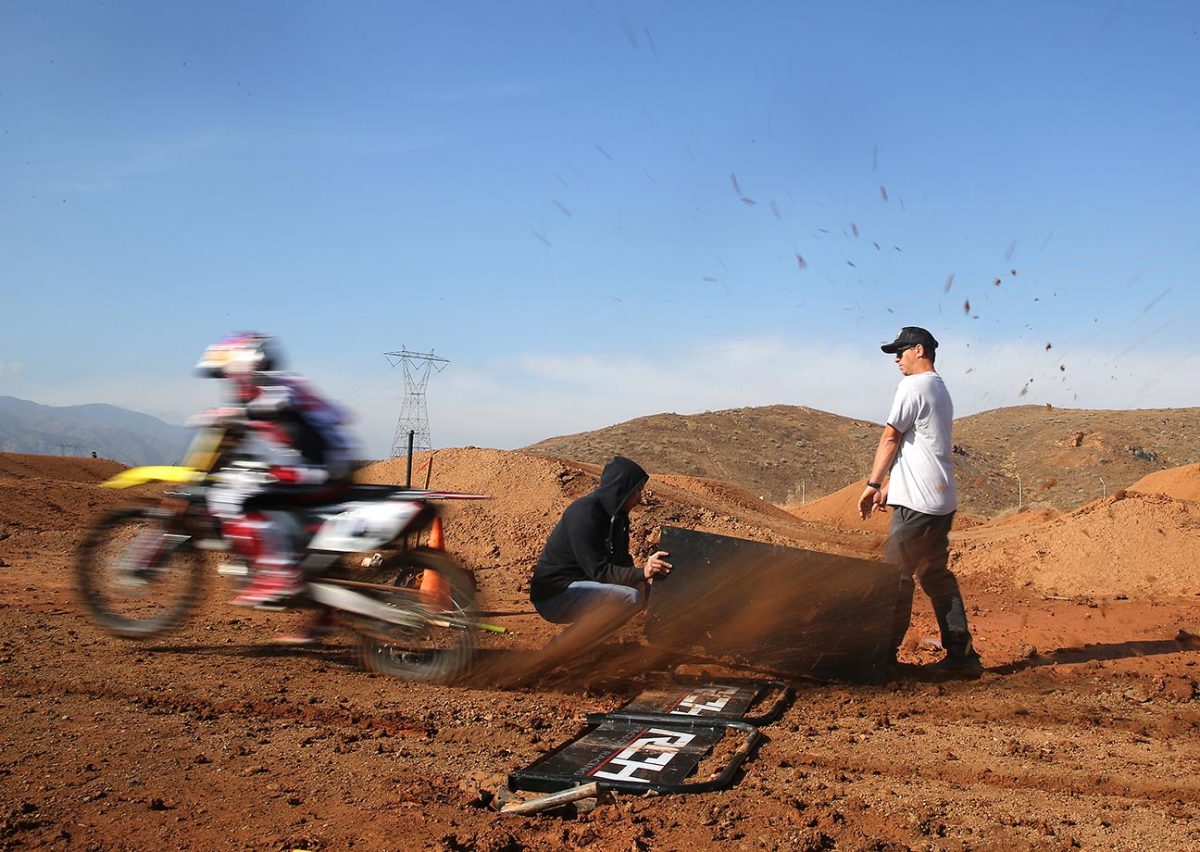
Ken Roczen practices his 'starts' at the team's training facility in Corona.
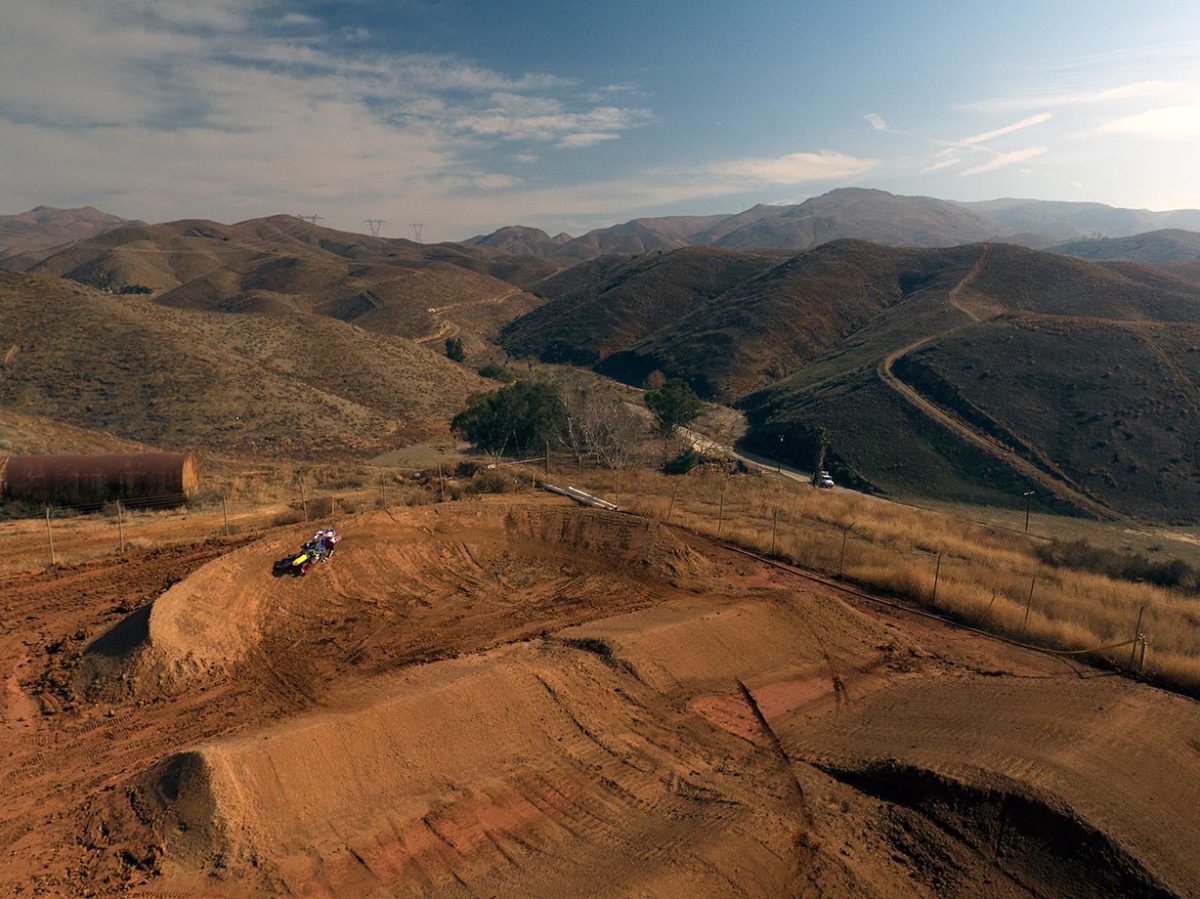
With the beautiful hills of southern California in the background, Ken Roczen gets in some pracitce riding time.
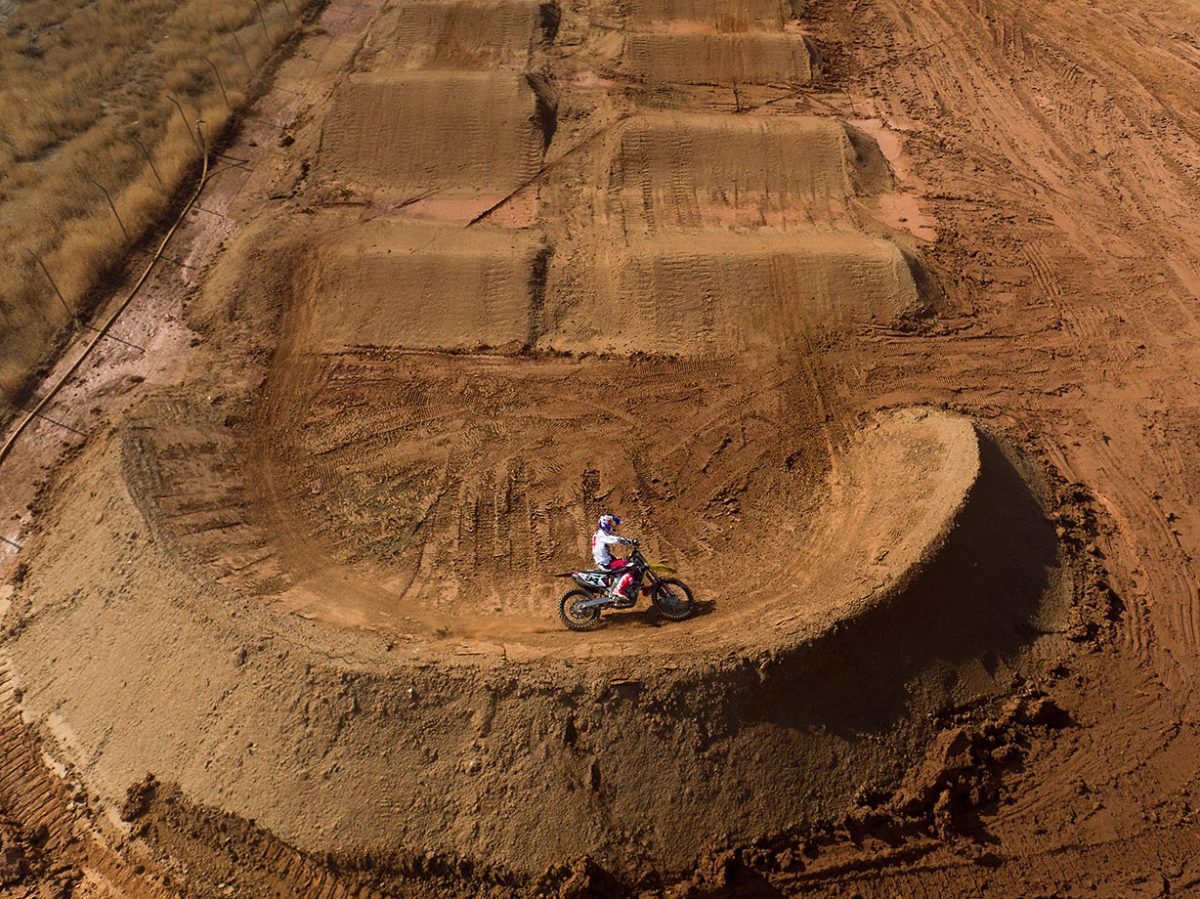
Ken Roczen practices in the turns.
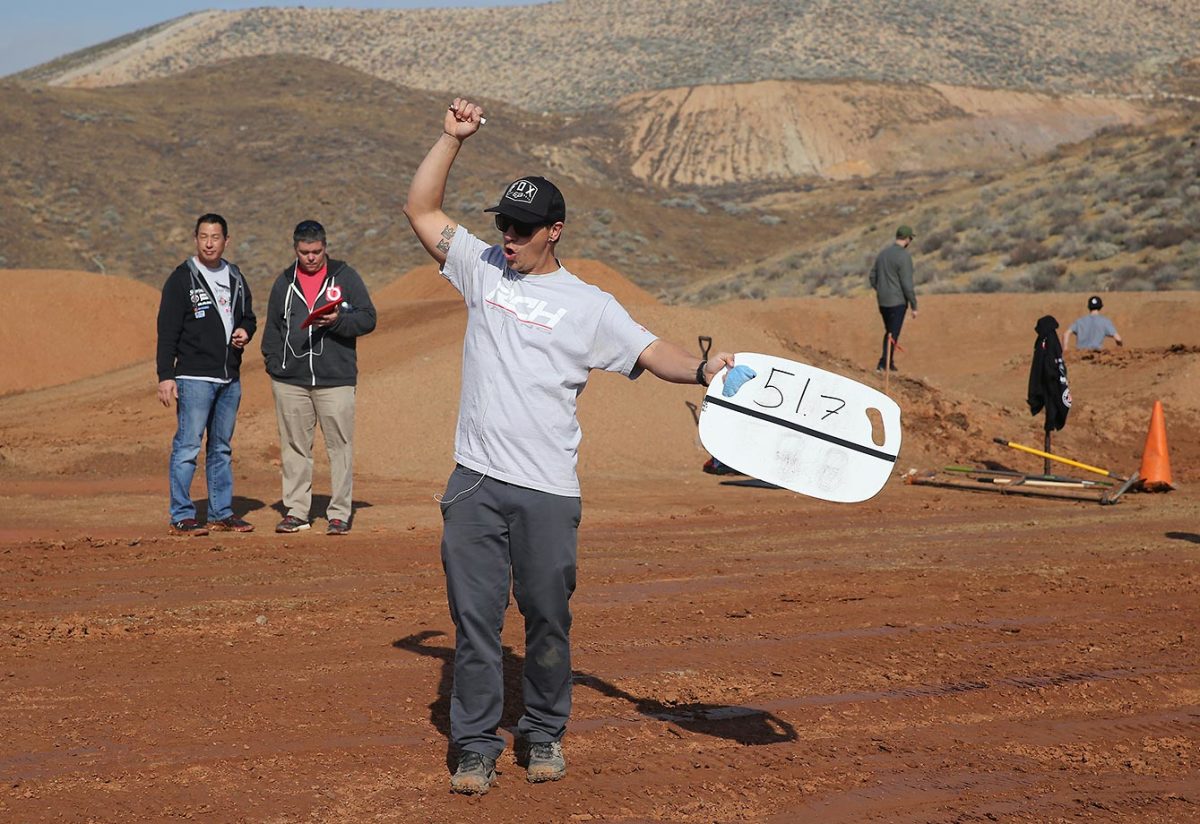
Ken Roczen's team cheers him on during practice at the team's training facility in Corona.
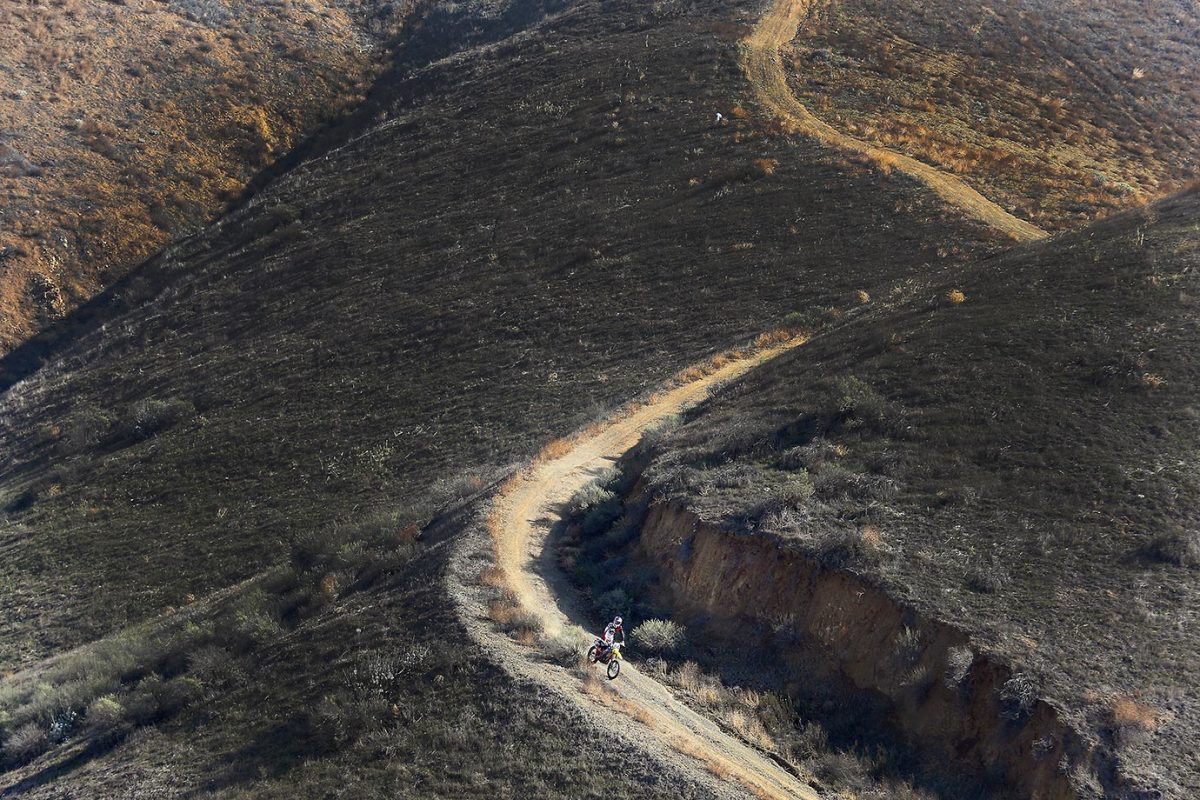
Ken Roczen rides down a mountain trail in the hills of Corona.
Yet you led that race from wire to wire. At this last WTM you didn’t take the lead [over second-place finisher Allison Tai] until Mile 56 or so. What was going on there?
AB: People were out there telling me, ‘You’re in third or, you’re in second—what’s going on? What’s wrong?’ And my thought process was: This is a long race, it’s not won in the first eight hours, it’s not won in the first 12 hours. So I try not to think about where other people are in relation to me.
I just kept kind of steady and going at a clip I felt was comfortable. I’ve done this race a few times before, and am able to gauge how I’m feeling. Afterward, I looked at my splits and I ended up picking up speed as the night wore on.
AM:You built enough of a lead to turn your final lap into a kind of victory stroll.
AB: I took 2 ½ hours to finish that lap. I didn’t want to finish before 2 p.m. [and thus be forced to begin another lap]. The winds were picking up by then, we were getting another sandstorm.
AM:Sandstorms. How fitting. What is an obstacle racer’s defense against a sandstorm?
AB: Motorcycle goggles. Last year we got a huge sandstorm in the middle of the night. I saw a lot of goggles like the kind people wear at Burning Man. And a Buff to cover your face. But I always come away with windburn. There’s only so much you can do.
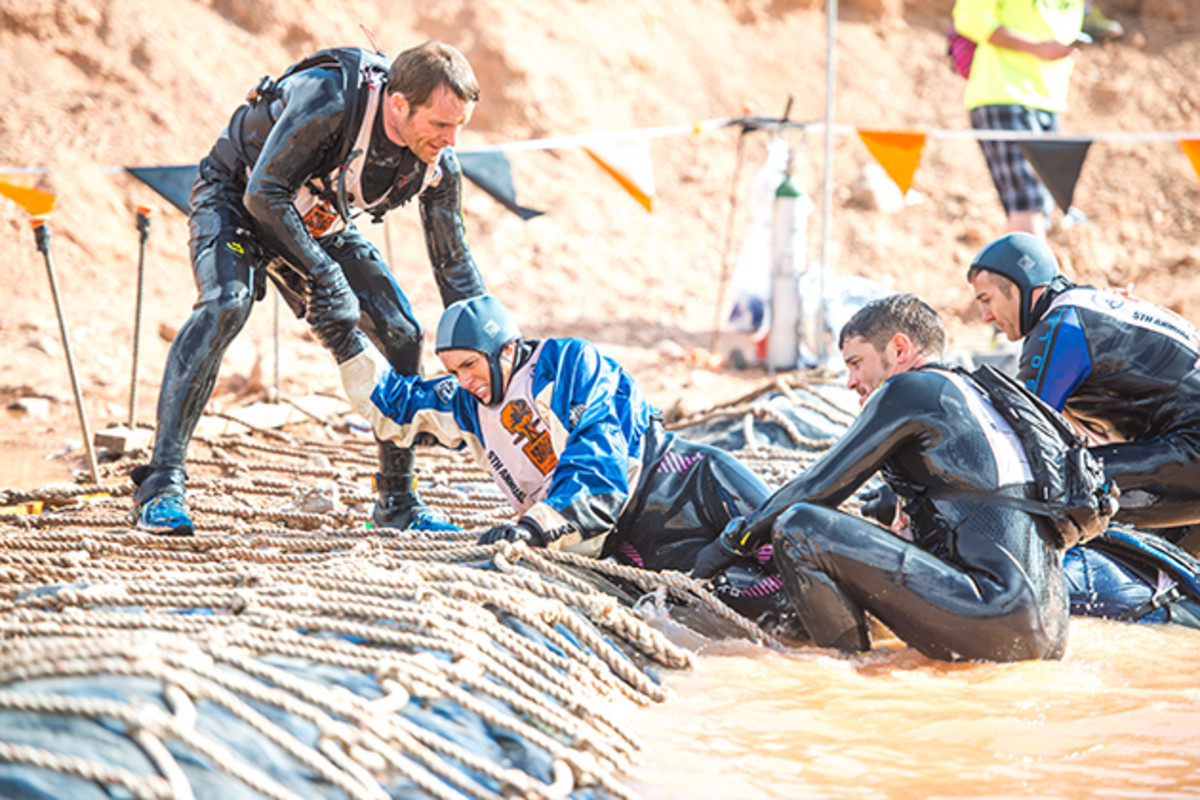
But what’s your biggest enemy out there? Is it the cold?
AB: I think the cold and the wet together. And the fact, that, as you start to slow down, you lose your body heat. As the night wears on, you’re apt to be more tired, you’re slowing down, getting colder, you’re wet, so it becomes a constant battle against hypothermia.
AM:How do you fight it? I’ve seen that your pre-race gear list includes multiple wetsuits, lots and lots of those chemical hand warmers for use during pit stops.
AB: You have to keep moving. Once you slow down, you stop, it’s game over. Another thing that a lot of people do, they wait too long to put on their wetsuit. We started [in Vegas] it was a nice day, 75 degrees. But I put on my wetsuit after the second lap. I wanted to put it on before the sun went down. I know it gets really cold after sundown. If you wait too long to put it on, after you’re cold, sometimes you’re already past the point of no return.
AM:Tough Mudder emphasizes teamwork—except for its world championship—and doesn’t time participants, whereas the Spartan Race is all about competition. Are you happy and comfortable in both worlds?
One female physician's experience in a man's world of pro sports medicine
kind of my roots. I love the people, and those events give you such a great feeling.
Tough Mudder always has and always will emphasize teamwork. There’s just this one race a year—World’s Toughest Mudder—where there are prizes and places. But the course is so long, and there’s still so much teamwork involved in it.
I’d be helping push someone over a wall, and people were saying, ‘Aren’t you trying to win this thing?’ Well, yeah, but it’s a 24-hour race. I can stop for 15 seconds and give somebody a hand.
AM:You’ve won, or been on the podium, in numerous Spartan races. In his book Spartan Up!, that company’s CEO and co-founder, Joe DeSena, writes about how he revels in springing surprises on competitors, moving the finish line, getting in their heads. Do you end up wishing him bodily harm?
AB: I actually love that, because it forces you to find this mental grit, to ask yourself : What’s my motivation to keep going, if don’t know where the finish line is?
It’s a really cool experience, but people who come from very regimented backgrounds of like, this is the start, this is the finish, or like marathoners, ‘I want to know my split’—it’s not gonna work for you.
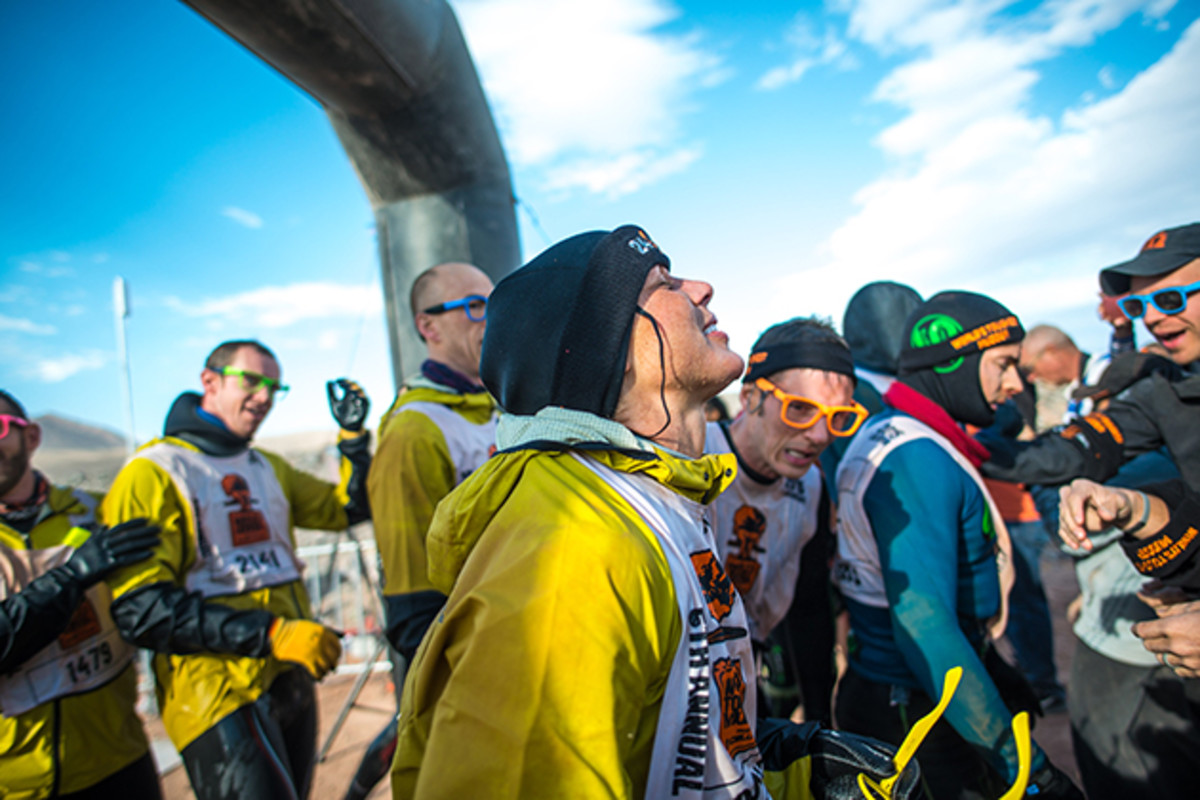
Please provide a CliffsNotes version of your athletic background.
AB: As I kid I guess I was pretty talented. I was on the club soccer team and the club softball team, and the travelling basketball team. And I was a pretty good golfer. I never was like super-excellent at anything. I was really good when I was young, but in high school, people started getting better than me.
AM:Did you play a varsity sport at your alma mater, Washington University in St. Louis?
AB: I did not. In my mind, I was in school for academics. I did sing in an a cappella group, The Greenleafs.
AM:Named for that plant that is enormously popular with undergraduates?
After 40 years racing, mountain biking legend Tinker Juarez soldiers on
Eliot. But yeah, everybody thinks it’s a reference to something else.
AM:Do you sing to yourself during obstacle runs?
AB: I do. In 2012 when I won World’s Toughest Mudder, it was right when Macklemore’s “Thrift Shop” came out. I’m pretty sure I just rapped that song for the entire 24 hours.
AM:What was your intro to obstacle racing? Was there an “A-ha!” moment, where you realized that you had found your athletic purpose?
AB: There was a Tough Mudder in Wisconsin in 2011. One of my co-workers [at her Chicago law firm] said, ‘You should do this race.’ I said, ‘I’ve never run 13 miles before,’ or, ‘I don’t think I can do it.’ But we signed up six months in advance, and everyone was training, we’re all excited.
There was a group of four or five of us, and we started up the first hill. We were going to run it as a team, but I realized I was kind of moving much faster than they were. They told me, ‘Just go!’ And I took off, and ran around that course, and it was so much fun. I’d always ran to stay in shape, your obligatory eight miles, I never really wanted to run road races, I didn’t like that entire idea—splits and being competitive and whatnot. Obstacle racing was really fun, and everyone was super-cool out on the course, everyone having a blast, and I just wanted to do more.
AM:You recently located from Chicago to San Jose. How are you balancing your law career with your kind-of career as an obstacle racer?
AB: I train very early in the day. I’ve learned that nobody really bugs me at four o’clock in the morning.
